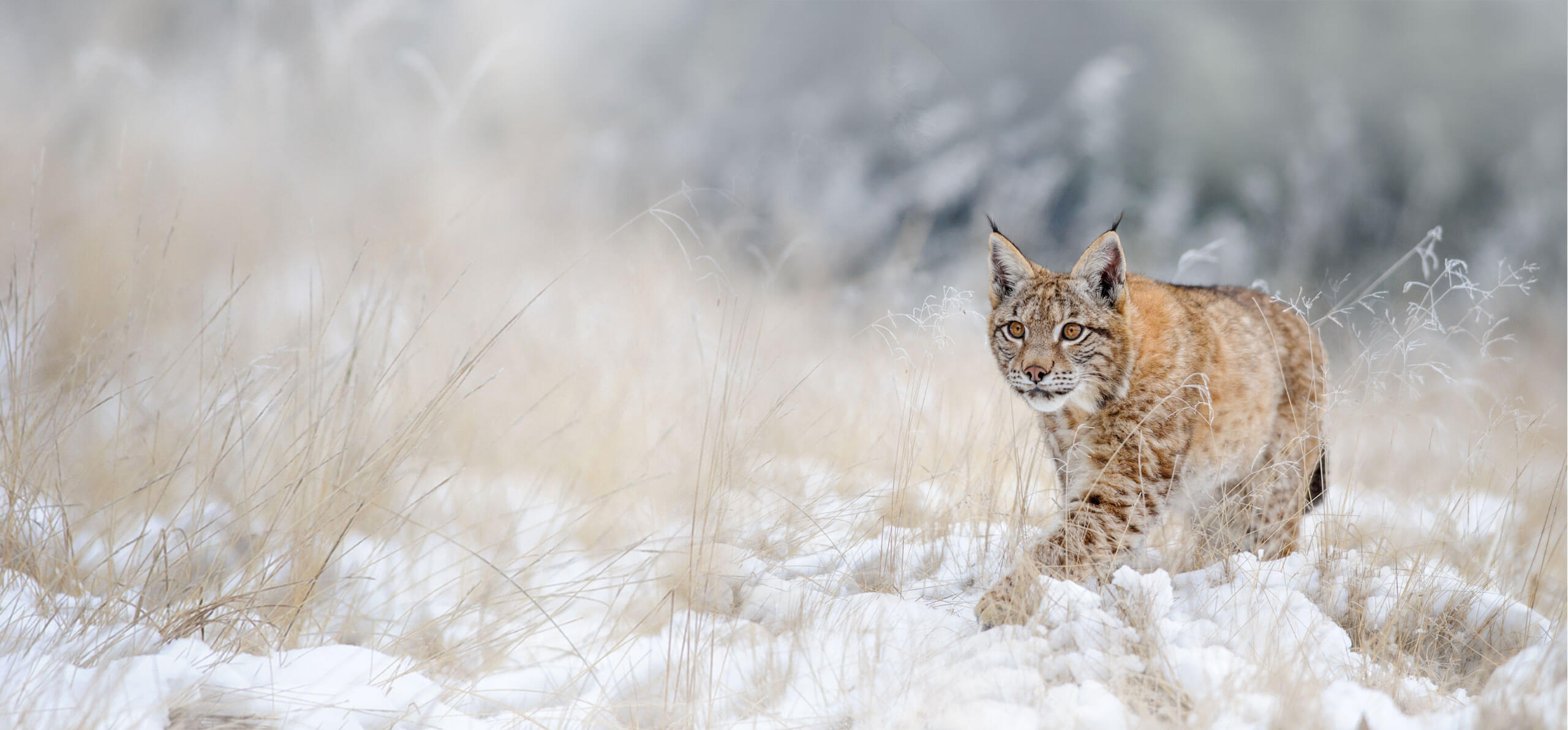Dressed to Impress
A truly beautiful and easily distinguished feline, lynx have a short tail and are marked by characteristic tufts of black hair that stand tall from the tips of their ears. And while all species of the lynx have white fur at their chest and belly, their body color varies from brown to gold to beige-white, and they are occasionally marked with brown spots on their limbs. Most lynx also have a ruff of black bars under their neck that may resemble a bow tie, though this is often not visible.
Equipped for Success
Covered in thick fur that protects them from harsh winters and equipped with wide paws, the lynx is every bit at home hunting small prey in deep snow as it is in the arid region of the southwestern United States.
Obligate carnivores like our own house cats, the lynx prefers to hunt at night, well out of sight of humans who pose the greatest threat to these elusive cats. Prey for these hunters includes small animals like mice, squirrels, fish and fox, all the way up to larger animals such as reindeer, white-tailed deer and other game.
Going It Alone
Living up to their mystique, the lynx is usually a solitary animal, preferring to hunt alone, and mating only in late winter. After an average gestation time of 70 days, a mother lynx generally gives birth to one to four kittens who stay with the mother for one more winter. After nine months or so, the lynx is considered a young adult and begins its life as a solitary hunter, often creating its den in crevices or under ledges.
Conservation
Often hunted for their fur, many species of lynx have now become either endangered or listed as threatened species. Several lynx resettlement projects have been conducted since the 1970s with the best results for reintroduction to the wild occurring in Slovenia, Croatia, Germany and Italy. There have also been several resettlement attempts in the United States, with hunting and trade strictly regulated across much of the country. With continued protection and conservation, the lynx as a species will continue to thrive in the habitats in which it has roamed for so many years.

